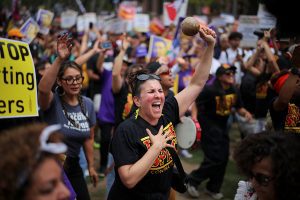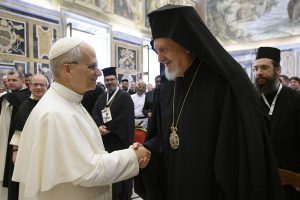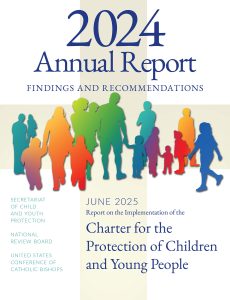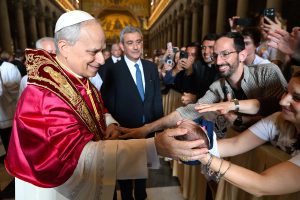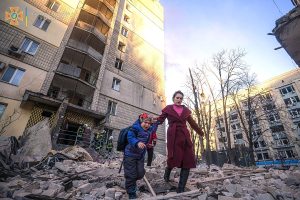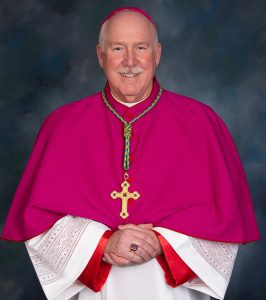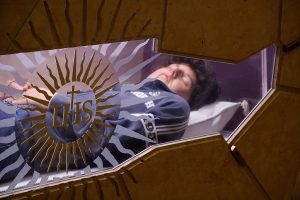WASHINGTON (OSV News) – The U.S. bishops urged House and Senate leaders in a June 9 letter to remember that while artificial intelligence presents opportunities, it also presents challenges.
The bishops said policy considerations surrounding AI should be governed by an ethical framework.
The bishops noted Pope Leo XIV has made his concerns about AI an early focus of his papacy, writing, “As our new Holy Father Pope Leo XIV reminds us, AI requires ‘responsibility and discernment in order to ensure it can be used for the good of all, so that it can benefit all of humanity.'”

The letter acknowledged the bishops “are not technical experts,” but said that as pastors, they are “entrusted with concern for the life and dignity of the human person and the common good.”
AI could have an impact on a host of policy considerations, the letter said, from labor and the economy, to family life, to health care, and even to weaponry used in war. The letter expressed concern about “the development and use of lethal autonomous weapons.”
“Policies should make clear that human control over any weapon system is essential to mitigate the horrors of warfare and the undermining of fundamental human rights,” it said.
In a statement released with the letter, Bishop William D. Byrne of Springfield, Massachusetts, chairman of the USCCB’s Committee on Communications, ??”Artificial intelligence is rapidly shaping the future of our society.”
“As pastors entrusted with the care of human life and dignity, we urge lawmakers to heed the call of our Holy Father, Pope Leo XIV, to help ensure that AI is developed with responsibility and discernment so that it may truly benefit every person,” Bishop Byrne said.
The bishops’ letter was addressed to House Speaker Mike Johnson, R-La.; House Minority Leader Hakeem Jeffries, D-N.Y.; Senate Majority Leader John Thune, R-S.D.; and Senate Minority Leader Chuck Schumer, D-N.Y.
The letter urged AI policy to be informed by principles, including care for the common good, the dignity of the human person and respect for the truth.
“AI offers the opportunity to develop vast amounts of information in creative ways, share knowledge, and enhance communication among people,” the letter said. “However, we are increasingly living in a time that the late Pope Francis described as a ‘growing crisis of truth’ (Message to World Economic Forum, 2025).
“With the rise in ‘deepfakes,’ misuse of news and political information to manipulate public opinion, and the spread of falsehoods, AI is being used by some to undermine the dignity of persons and respect for the truth.,” the letter continued. “AI systems must have human oversight and well-defined accountability in order to promote transparency, and fair democratic processes.”
Other challenges presented by AI include the generation of sexually explicit imagery as well as threats to data and intellectual property rights, as well as the environmental impact of its high consumption of electricity and generation of electronic waste, the letter said.
The letter was signed by the chairs of six committees of the U.S. Conference of Catholic Bishops.
In addition to Bishop Byrne, the signatories and their committees are: Bishop David M. O’Connell of Trenton, New Jersey, Committee on Catholic Education; Metropolitan Archbishop Borys A. Gudziak of the Ukrainian Catholic Archeparchy of Philadelphia, Committee on Domestic Justice and Human Development; Bishop Robert E. Barron Bishop of Winona-Rochester, Minnesota, Committee on Laity, Marriage, Family Life, and Youth; Bishop A. Elias Zaidan of Maronite Eparchy of Our Lady of Lebanon, Committee on International Justice and Peace; and Bishop Daniel E. Thomas of Toledo, Ohio, Committee on Pro-Life Activities.
Earlier in June, Maryland’s Catholic bishops released a pastoral letter on artificial intelligence urging Catholics to harness the use of emerging technologies while always putting “human dignity” at the forefront.
“As AI technologies transform our lives, workplaces, relationships and even our sense of identity, the Church must be a prophetic voice, calling the world to place the human person, made in the image of God, at the heart of this transformation,” said the June 5 letter posted online by the Maryland Catholic Conference. The bishops emphasized using AI for good works, not to dominate or dehumanize and emphasized that AI can be a useful tool if applied with the right intent.

